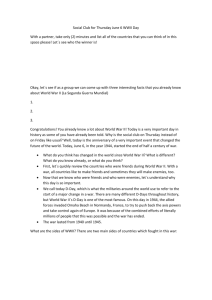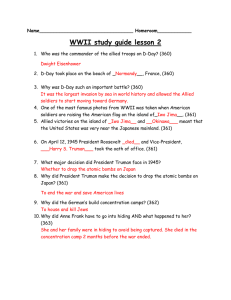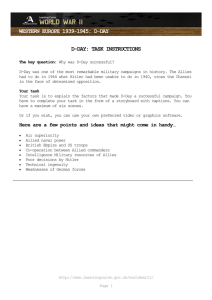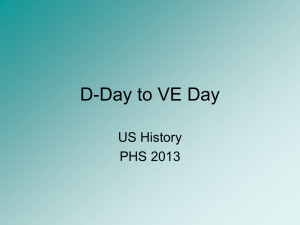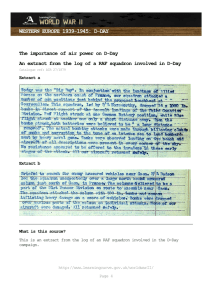WESTERN EUROPE 1939-1945: D-DAY February 1944
advertisement
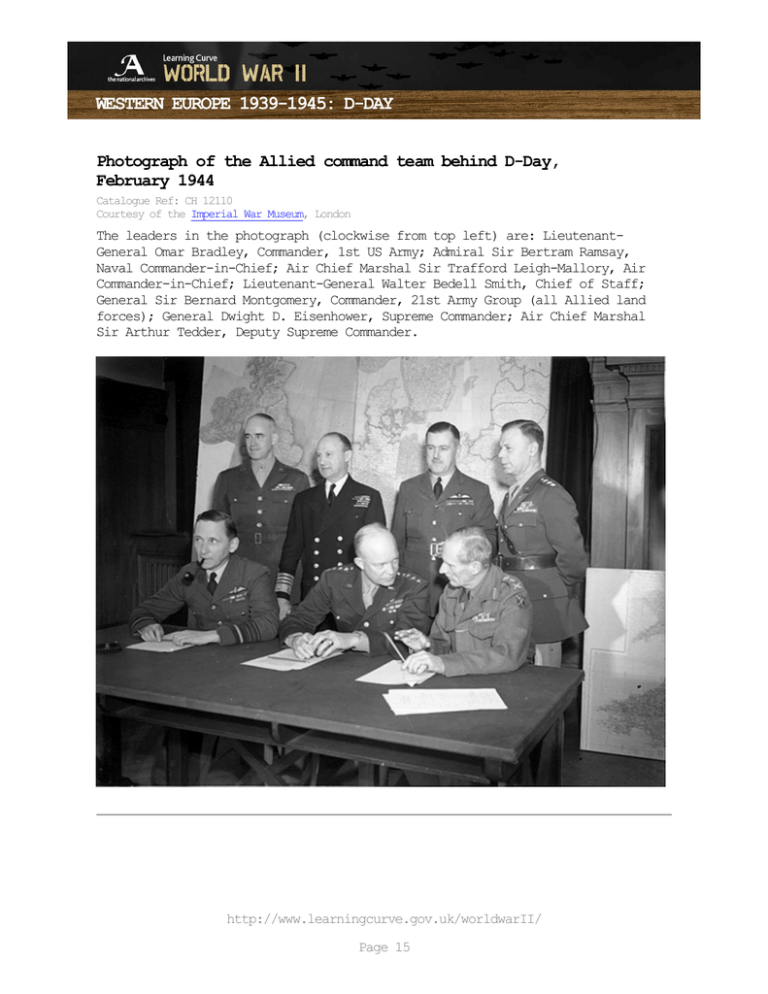
WESTERN EUROPE 1939-1945: D-DAY Photograph of the Allied command team behind D-Day, February 1944 Catalogue Ref: CH 12110 Courtesy of the Imperial War Museum, London The leaders in the photograph (clockwise from top left) are: LieutenantGeneral Omar Bradley, Commander, 1st US Army; Admiral Sir Bertram Ramsay, Naval Commander-in-Chief; Air Chief Marshal Sir Trafford Leigh-Mallory, Air Commander-in-Chief; Lieutenant-General Walter Bedell Smith, Chief of Staff; General Sir Bernard Montgomery, Commander, 21st Army Group (all Allied land forces); General Dwight D. Eisenhower, Supreme Commander; Air Chief Marshal Sir Arthur Tedder, Deputy Supreme Commander. http://www.learningcurve.gov.uk/worldwarII/ Page 15 WESTERN EUROPE 1939-1945: D-DAY What is this source? This photograph is an official publicity photograph of the Allied commanders planning D-Day. The photograph was taken in February 1944 but probably not released to the public until after the invasion had taken place. What’s the background to this source? By late 1942 the tide began to turn against Germany. From 1943 to 1944, British Empire and US forces began a build up of troops and equipment to drive the Germans out of the lands they had invaded in 1940. The landings took place in June 1944. The date of the D-Day landings was June 6th 1944. It was an incredibly risky operation, because the Allies had to cross the English Channel. Weather and tides had to be perfect for the invasion to work. It’s worth knowing that... The leaders of the British Empire and US forces were under pressure from Josef Stalin, the leader of the USSR to attack the Germans from the West. Soviet forces had been fighting the Germans since 1941 and they felt that the western Allies should also take their share of the fighting. The Allied commanders were facing many problems in preparing for D-Day. They were short of vital equipment, especially landing craft. There were also big disagreements between the Allied commanders about exactly where and when the invasion should take place and what the Allies should do after they captured the beaches. How does this source help us to understand why D-Day was successful? 1. Which different military services are represented in this photograph? 2. What countries are represented? 3. Do you get the impression from this photograph that the Allied commanders worked well together? 4. Do you think that was the intention of this photograph? 5. How would you sum up the main value of this source to the historian? • • Will you include this source in your storyboard? If you do use it, what are the main points you will make in your caption? http://www.learningcurve.gov.uk/worldwarII/ Page 16
